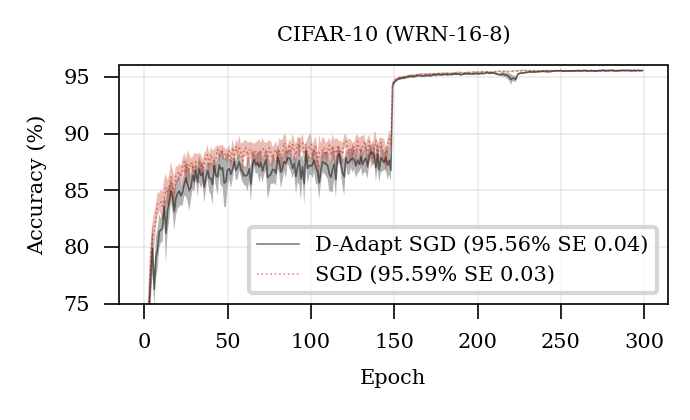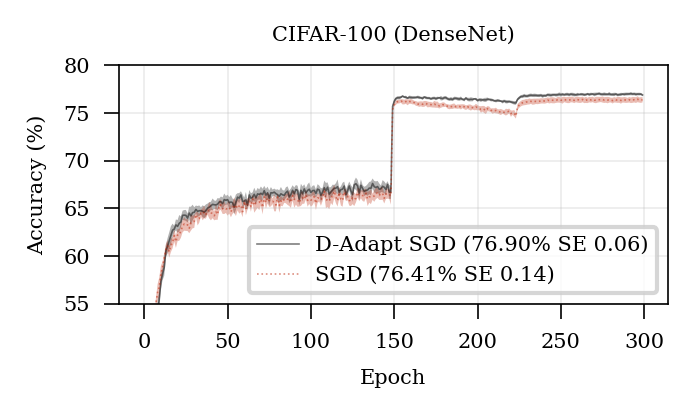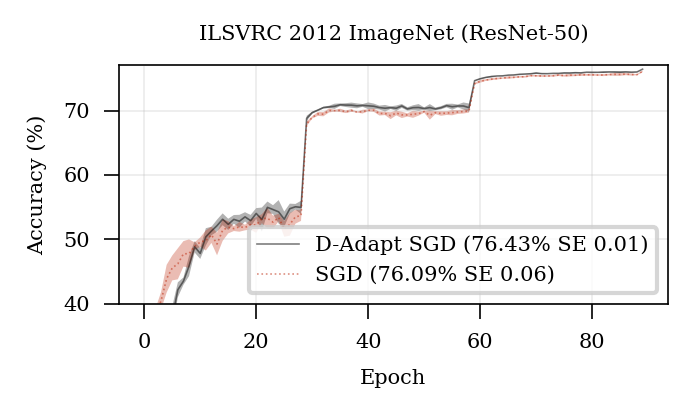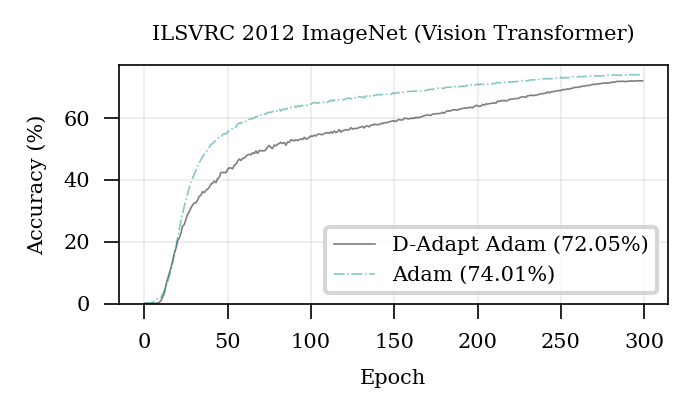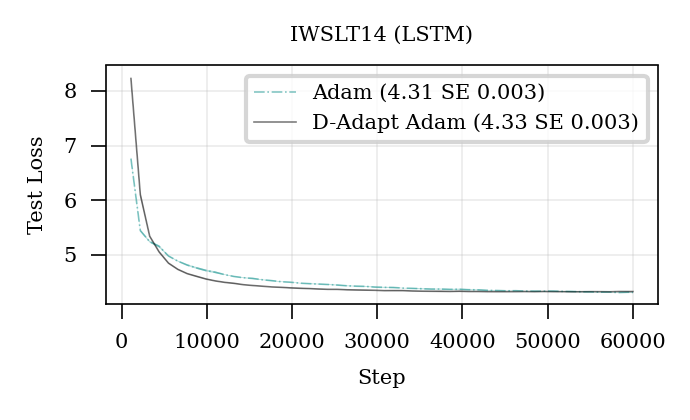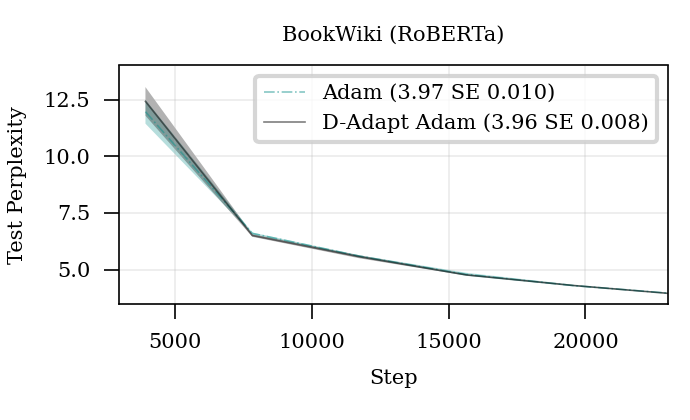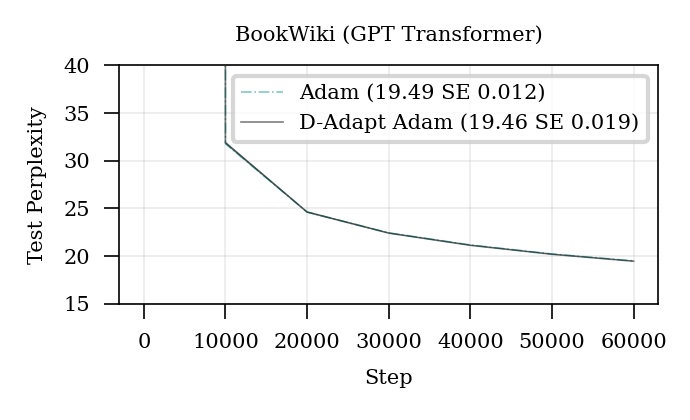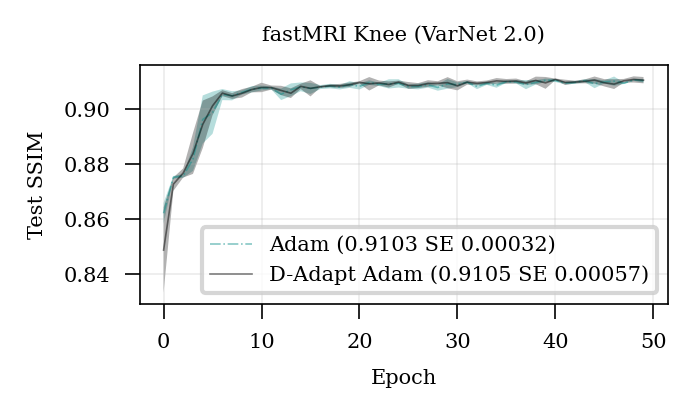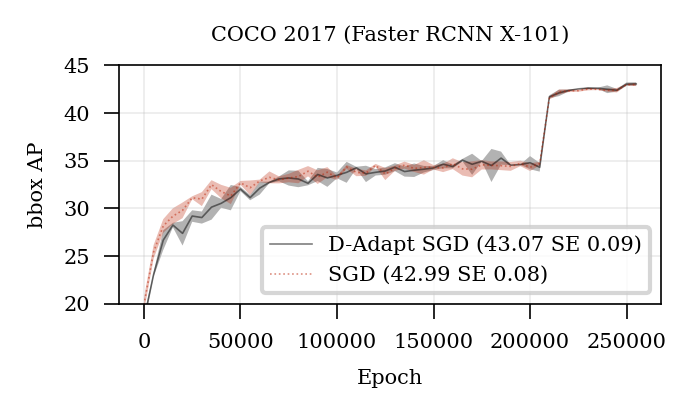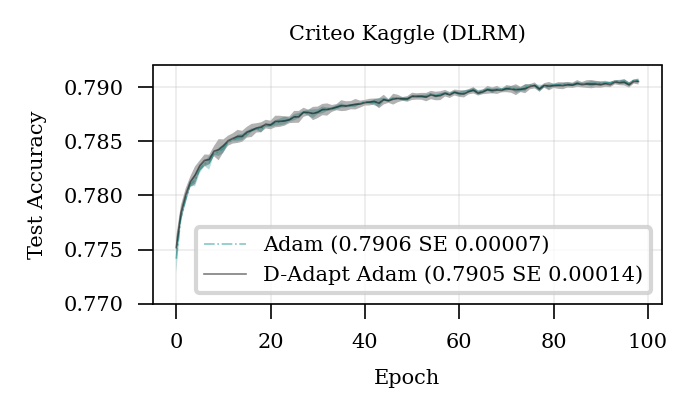Learning rate free learning for SGD, AdaGrad and Adam!
by Aaron Defazio and Konstantin Mishchenko (Arxiv)
pip install dadaptation
NEW V3.0 release uses an improved algorithm that may give different results from past versions. The old version is still availiable under experimental/d_adapt_adam_preprint.
We have recently released the Prodigy method, which grows the adapted learning rate faster than D-Adaptation in theory and practice. Try it out if D-Adaptation is under-estimating the learning rate.
If you use D-Adaptation in a publication, please cite our work as
@ARTICLE{defazio2023dadapt,
author = {Aaron Defazio and Konstantin Mishchenko},
title = {Learning-Rate-Free Learning by D-Adaptation},
journal = {The 40th International Conference on Machine Learning (ICML 2023)},
year = {2023}
}
The provided Pytorch Optimizer classes are drop-in replacements, either copy into your project or use via pip with dadaptation.DAdaptSGD, dadaptation.DAdaptAdam or dadaptation.DAdaptAdaGrad.
- Set the LR parameter to 1.0. This parameter is not ignored. Setting it larger to smaller will directly scale up or down the D-Adapted learning rate estimate.
- Different per-layer learning rates can be achieved by setting the layer_scale value in each parameter-group. It defaults to 1.0, and scales each layer's learning rate relative to the other layers.
- Use the same learning rate scheduler you would normally use on the problem.
- The Adam variant supports AdamW style weight decay, just set decouple=True. It is not turned on by default, so if you are replacing your adam implementation, make sure you use decoupled if necessary.
- It may be necessary to use larger weight decay than you would normally use, try a factor of 2 or 4 bigger if you see overfitting. D-Adaptation uses larger learning rates than people typically hand-choose, in some cases that requires more decay.
- Use the log_every setting to see the learning rate being used (d*lr) and the current D bound.
- Only the AdaGrad version supports sparse gradients. It does not adapt as efficiently as the other variants and should be considered experimental.
- Added support for layer-wise scaling to DAdaptAdam.
- Major improvements to DAdaptAdam, improving the performance particularly on Transformer models. This variant may behave differently in practice. The old version is availiable under experimental/d_adapt_adam_preprint if you wish to continue to use it.
- The IP variant is now the main variant of the method.
- Added Lion. This is highly experimental. Feedback on it's performance is welcome.
- Added Adan - should still be considered experimental.
- Added support for PyTorch's Fully Sharded Data Parallel.
- Improved support of edge cases such as learning rate zero.
- Improved logging - uses Python logging rather than print statements
See the License file.


